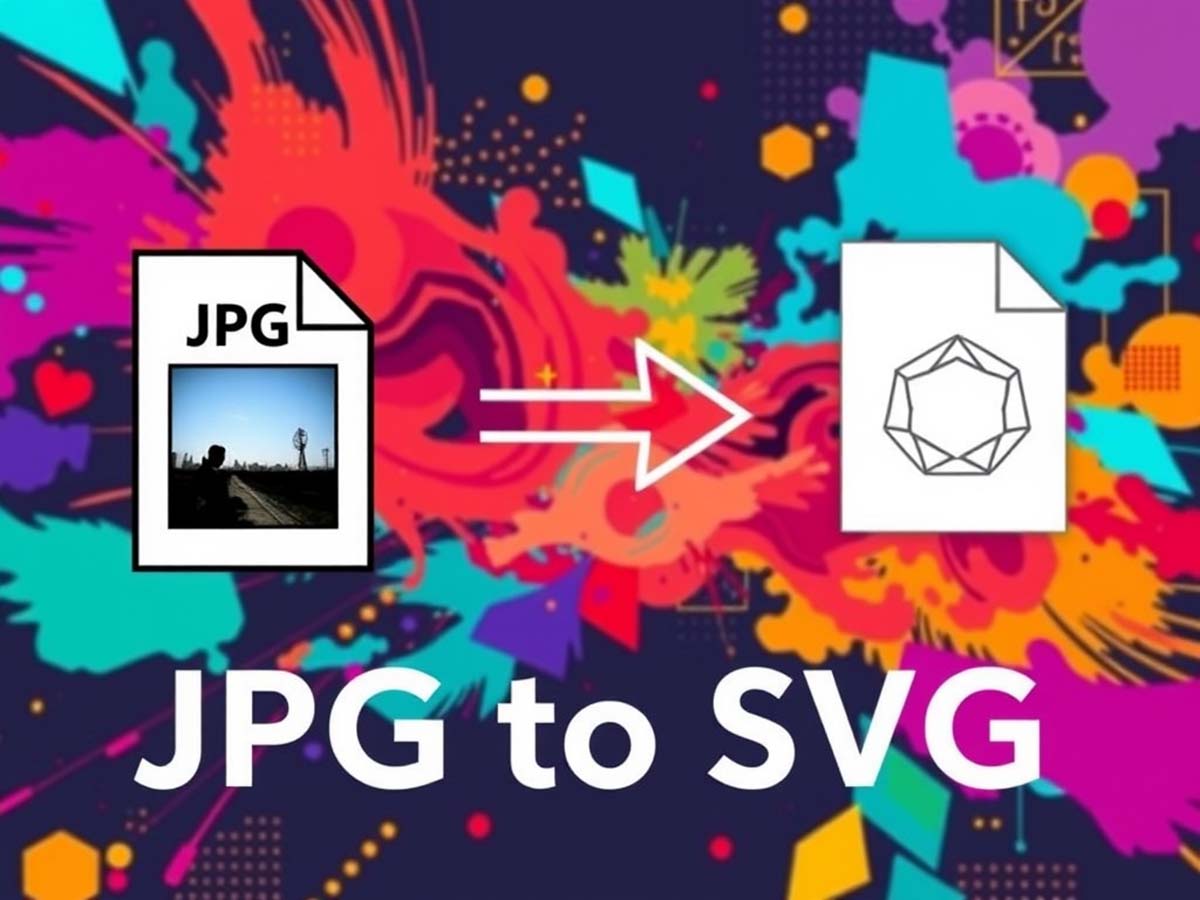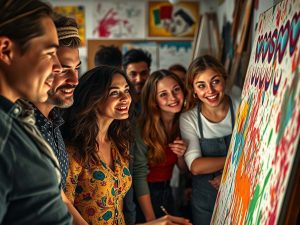
Digital art has evolved beyond traditional formats, allowing artists to explore new creative possibilities without compromising quality. One crucial aspect of this shift is the ability to transition between file types seamlessly. For instance, formats like JPG to SVG provide a bridge between raster and vector graphics, ensuring clarity and scalability in digital designs. This flexibility empowers artists to work across various platforms while maintaining the integrity of their creations.
Current shifts transform visual creation. Traditional formats served well for years; however, rising digital needs and modern techniques introduce vector paths that support scalability, sharper lines, and flexible manipulation. A surge in technical innovations has spurred interest in formats that keep details crisp regardless of size. Observers note increased efficiency and clarity when artists choose vector approaches.
The Shift in Digital Art Formats
Old formats once provided reliable imagery for countless projects. In contrast, modern vectors permit refined scaling and adjustments while preserving quality. Recent years have seen dramatic market changes, along with technical improvements that reduce effort and time. Experts now cite research showing that digital visuals converted from pixel maps into flexible drawings yield smoother transitions and improved design adaptability.
Several creative communities report that digital work now relies less on fixed-size pixels. Rising user demands for flexible art form experiences fuel interest in scalable images. Industry specialists mention that converting artwork from fixed formats often brings reduced file dimensions and improved clarity. Statistical reports confirm a steady increase in artists adopting new methods that rely on flexible outlines instead of confined pixel maps.
Technological growth continuously fuels this transition. Evolving software now provides efficient options for artists looking to shift from conventional approaches. Many creative experts express satisfaction with a format that adjusts to modern screens and print sizes alike. Visual creations achieve new lifespans through formats that do not impose limits on size or clarity. Audiences enjoy sharper reproductions, making format conversions increasingly popular.
Advantages of Adopting Vector Formats in Art
Digital artwork now benefits from formats that permit fluid resizing. A switch to vector styles offers unmatched clarity when images enlarge or shrink. Many creators report increased satisfaction when switching from fixed grids to scalable designs.
Scalability without Loss of Quality
Converting images into adjustable outlines frees creative work from pixel constraints. Observers note that quality remains intact even when image dimensions multiply significantly. Projects no longer suffer distortions when resized for large prints or small devices. This strength gives visual work renewed longevity across multiple platforms. Additionally, enhancing graphic design with scalable formats allows artists to create adaptable visuals that maintain sharpness and clarity in both digital and print media.
Detail preservation remains a priority when images transform. Visual elements preserve their crisp edges and defined contours. As artists experiment with digital designs, scalability provides room for bold experimentation. Professionals now praise the fluidity of design methods that no longer compromise quality during reproduction.
Enhanced Creative Flexibility
Artists achieve broader experimentation with flexible outlines. Instead of adapting rigid pixels, creative minds now shift shapes and colors with freedom. Flexible outlines allow experimentation with textures and overlays that remain crisp during various adjustments. Users report satisfaction when a project requires intricate adjustments later in production.
Creative techniques now expand through selective transformations. Visual components adjust to experimental filters and dynamic edits. Opportunities multiply as each design segment allows deeper refinement during final production. This freedom encourages risk-taking and innovation while maintaining visual integrity.
Innovative Conversion Techniques and Tools
Modern creators employ varied methods to change fixed visuals into flexible outlines. Numerous conversion methods appear with user-friendly interfaces and effective outcomes. Digital techniques often rely on a blend of manual tracing and software-assisted conversion. Each method promises fine-tuned details and precise curves.
Experts advise testing multiple techniques to achieve refined results. Many use auto-detection features that suggest vector paths based on image details. Manual adjustments follow, ensuring a perfect balance between precision and artistry. In some cases, creators blend automated processes with personal touches for a final product that truly mirrors their vision.
Additionally, advanced tools now integrate with popular design platforms. Software now processes conversions quickly without losing artistic nuance. Creative communities share tips on maximizing output quality while reducing time spent on repetitive tasks. Many report that with modern options, even complex designs receive rapid transformation while preserving essence and tone.
Practical guidelines support quality conversion. Artists should focus on the contrast between visual elements to ensure defined outlines. Experimenting with different conversion settings allows creators to find an optimal balance between speed and fidelity. Tips circulate within professional networks that stress trying multiple configurations to achieve refined curves and clean outlines.
A few conversion tools now offer preview functions before finalizing adjustments. Such features let creators spot potential issues early and modify parameters accordingly. In this way, both professionals and hobbyists gain assurance before committing to the final output. Creative individuals now appreciate tools that provide live feedback while preserving artistic vision.
Artist Perspectives and Industry Insights
Many digital creators now share firsthand experiences with shifting formats. Creators who once struggled with fixed imagery now praise methods that free them from resolution constraints. One digital artist recounted overcoming frustration when transitioning from confined images to flexible outlines that preserve detail regardless of size.
Art professionals mention that newer formats simplify collaboration with printers and online galleries. High-quality reproductions now arrive in sizes suited for diverse display media. Several interviews with leading creators highlight that switching formats offers an unexpected edge during design iterations. Numerous digital creators report that clear outlines open doors to unique project proposals.
Art workshops now feature sessions on format conversions, giving emerging artists guidance from established experts. Several educational programs now stress learning new techniques that allow creators to experiment beyond traditional approaches. Conversations within creative circles emphasize that flexible formats bring efficiency, saving time while maintaining visual appeal.
Industry experts also note that audience feedback plays a role. Viewers now demand sharper images that adapt smoothly across varied media. Creative professionals now focus on using methods that provide consistent clarity for art prints and digital displays alike. As visual platforms update rapidly, artists now respond by adopting methods that guarantee quality remains high across multiple channels.
Feedback from gallery shows reflects newfound interest. Critics observe that works presented in scalable outlines offer remarkable detail and adaptability. Art enthusiasts now celebrate conversions that bring out intricate nuances, reinforcing trust in newer techniques. Peer reviews continue to strengthen the view that flexible outlines are a significant improvement over fixed image formats.
The Future of Digital Art Formats
Trends signal that flexible outlines will grow in importance for creative work. Ongoing software developments promise even smoother conversion processes that refine detail beyond current capabilities. Experts predict that as technology improves, digital visuals will integrate conversion methods directly within editing platforms.
Artists now ponder how new techniques might shape future projects. Forward-thinking creators experiment with hybrid methods, blending traditional art with modern outlines to create pieces that retain organic texture while benefiting from modern clarity. Creative forums buzz with ideas on combining manual adjustments with automated algorithms that yield consistently refined outputs.
Discussions within creative communities now indicate that challenges may arise as new formats evolve. Future hurdles might include integrating dynamic outlines into virtual reality experiences or adapting traditional design methods to suit emerging technologies. Creative minds expect that evolving software will eventually smooth over these obstacles. The coming era holds promise for refinement in how visuals transform, producing work that delights both creators and audiences.
Many creators now offer advice on preparing for upcoming shifts. Suggestions include learning new conversion software and experimenting with mixed media projects that highlight flexible outlines. Thoughtful approaches now ensure that creative efforts align with evolving expectations. Artists consider that staying informed about format innovations becomes as important as mastering brush techniques in classical art.
As flexible outlines gain broader acceptance, educators now update curricula to include conversion techniques as fundamental skills. New courses provide hands-on experience with tools that process visuals into adaptable paths. Workshops, seminars, and online tutorials now equip upcoming creators with techniques that blend artistic vision with technical efficiency. With these changes, creative practices evolve alongside rapidly advancing technology, ensuring a seamless transition into future visual standards.
The art community now reflects on progress made over recent years. Creative networks share experiences and celebrate improvements that broaden artistic possibilities. Ongoing discussions prompt fresh ideas on using conversion techniques to bring unique aesthetics into modern visual storytelling. As formats become more adaptable, creators now craft work that pushes boundaries and sets new benchmarks for quality.
While many projects now enjoy improved clarity and versatility, creative minds continue to ask questions about future directions. How might interactive media incorporate flexible outlines seamlessly? What new tools will soon emerge that further simplify conversion methods? Artists now remain curious, seeking answers that lie just beyond current capabilities. Thoughtful experimentation, open dialogue, and continuous learning stand as cornerstones for progress in digital artistry.

